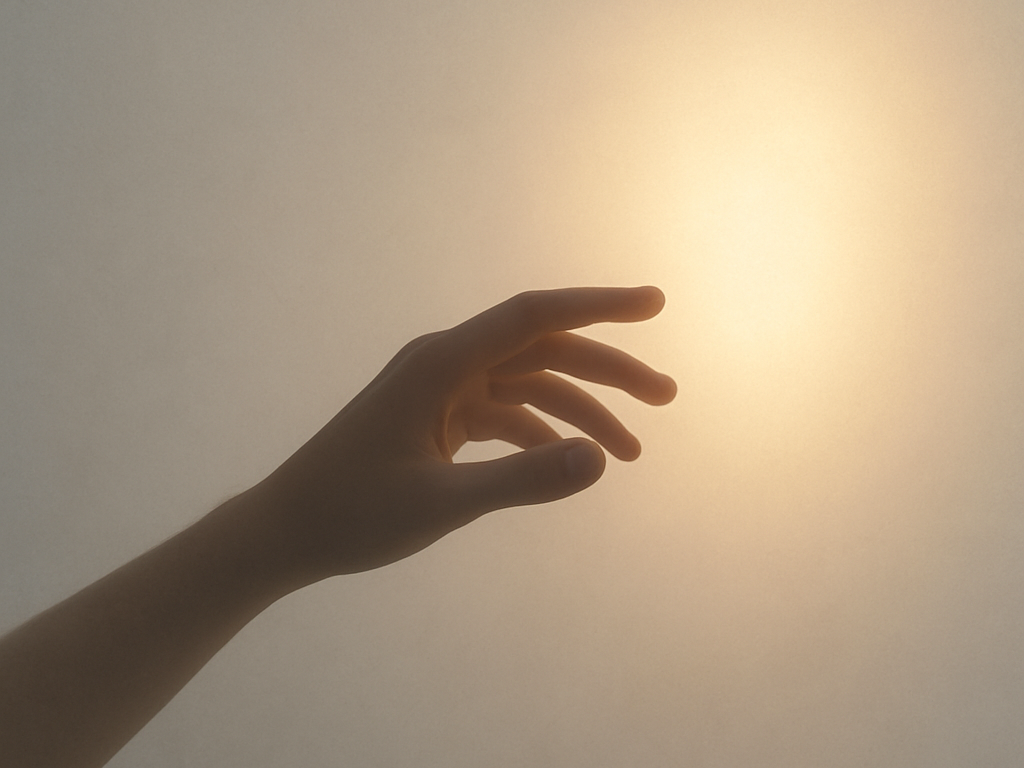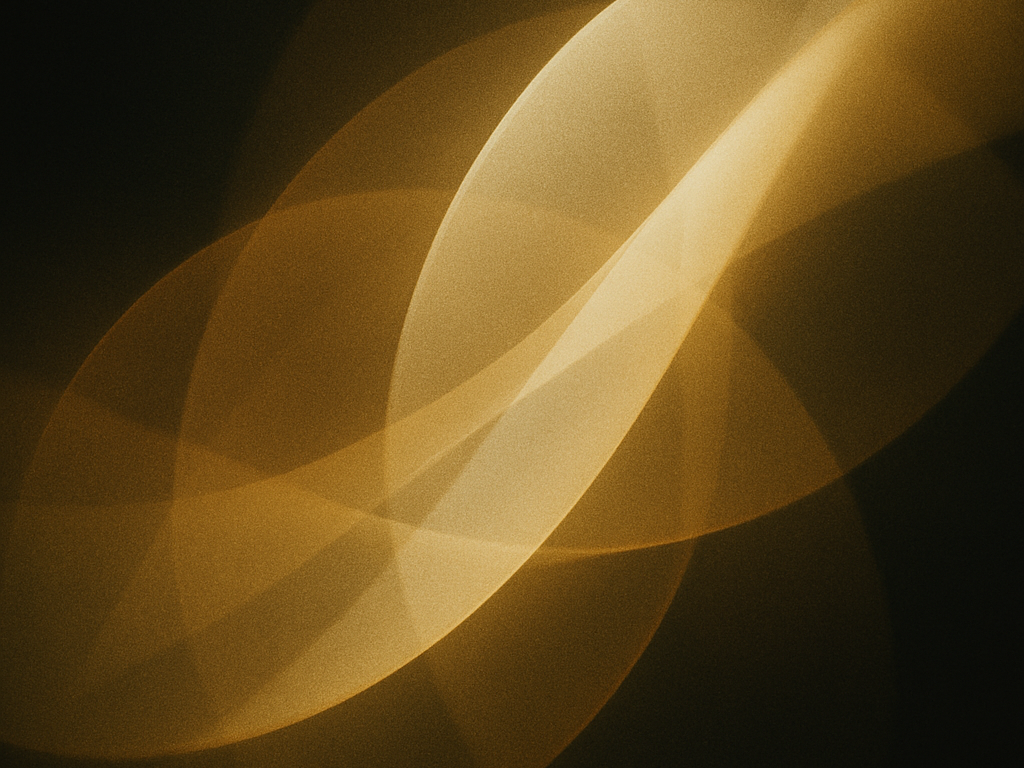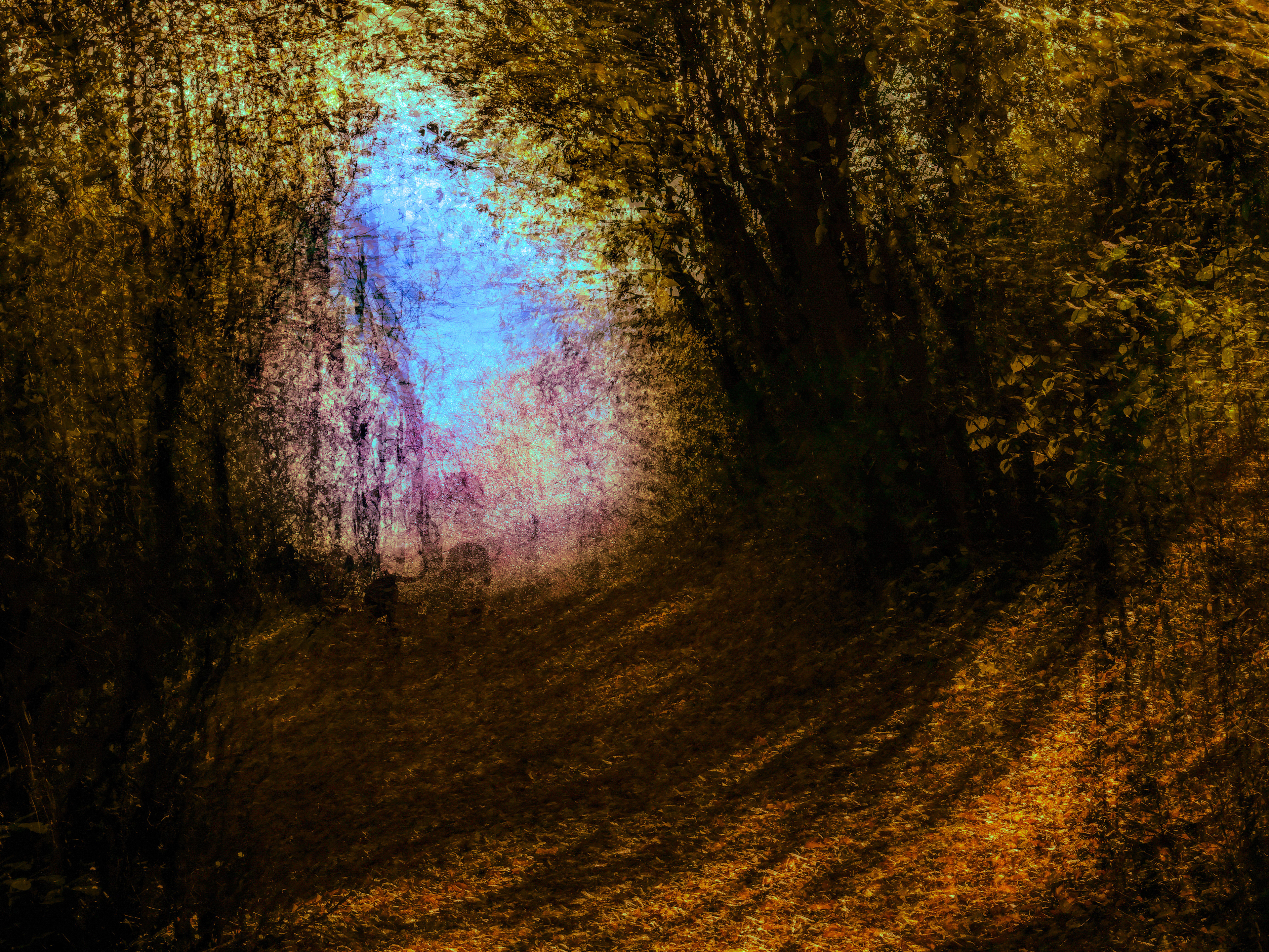Reality Is Not Given, but Happens
---
I. A World That Happens
For centuries, classical thought imagined reality as something fixed—independent, constant, already there whether we looked or not. In this view, the artwork was also a fixed entity: an object, a form, a meaning waiting to be interpreted.
Quantum physics shifted this vision.
A particle has no defined state until it is observed. It exists as a field of possibilities, a superposition of outcomes. Only when presence arrives does reality crystallize into form.
The philosophy of touch echoes the same.
A work of art does not carry guaranteed impact. Touch arises only when someone is present—attentive, available, witnessing. Without presence, the work hovers like an unopened vibration, like a string waiting for a breath of air to move it.
In physics this is called collapse.
In art we call it Tactus: the breath of resonance that emerges when attention meets the work.
Reality and art converge here:
both are events, not objects. And every event requires presence.
---
II. Three Principles of Quantum Physics and What They Reveal About Art
1. Superposition – Fields of Meaning
A quantum particle does not live in one state—it inhabits many possibilities at once, until attention chooses.
So too the artwork. Before presence arrives, it holds multiple resonances, like chords waiting to be struck. The painting, the poem, the photograph—none are single messages. They are openness, vibrating fields that may unfold differently for each witness.
2. The Observer Effect – Attention Creates
In quantum mechanics, measurement changes what is measured. Observation is not passive—it shapes the outcome.
In art, attention is creation. The viewer does not merely receive; they enter into relation. The work becomes real only when presence joins it. Here the artist, the work, and the witness breathe together—like two heartbeats slowly falling into rhythm.
3. Probability Fields – The World of Possibility
Reality in quantum physics is not determined, but lives in probabilities. Each moment holds multiple futures.
So too in art. The work does not carry a fixed destination or moral. It waits in suspension, capable of many emergences. Touch may occur—or remain withdrawn. Both belong to its dignity.
---
III. The Artwork and the Witness – A Shared Field
If reality requires observation, the artwork requires attention.
The work is not a closed object, but a field of potential.
Like a silent instrument, it vibrates with unseen possibilities.
When presence leans close, a tone arises—like a whisper you feel more in your chest than in your ear.
When no one listens, it continues to wait.
The viewer, then, is not consumer or interpreter, but co-creator. Presence does not only perceive—it summons. Attention does not demand—it allows. And in that allowing, the event appears.
This encounter is fragile. Sometimes it unfolds as Tactus, when the work breathes with us. Other times it remains in Retractus, withholding, watching from silence. Both states reveal reality as possibility: more than what we grasp at any moment.
---
IV. Touch as Quantum Event
Touch is the crossing of a threshold—possibility becoming actuality.
Physics calls it the collapse of the wave function.
Art calls it the breath of Tactus.
When touch happens, form is no longer just form.
Light against closed eyelids becomes warmth.
Sound enters the skin and lingers in the ribs.
Something shifts—both in the work and in us.
This touch may be subtle, almost imperceptible. Yet once it occurs, it cannot be undone. Like a quantum leap, reality itself has moved into another state.
And when it does not happen? The work remains alive in potential. The silence of Retractus is not absence but waiting.
---
V. Attention as World-Creating
Reality is not a finished stage before us. It is an open field that responds to how we attend.
To pay attention is to create.
When you look, the world shifts.
When you are present, the work begins to breathe.
This is not metaphor—it is event.
Attention does not judge, does not demand.
It is a gentle availability, like the darkness in which a new light can appear.
This attention is touch.
---
VI. Conclusion – Reality That Touches Back
The artwork is condensed presence.
It vibrates quietly until someone is there.
Then, for a moment, a reality is born that will never repeat again.
The world begins where you notice it is looking back.
And in that gl
ance—something happens
that was not,
and now is.
This is touch.
And perhaps, this is what we call reality.



